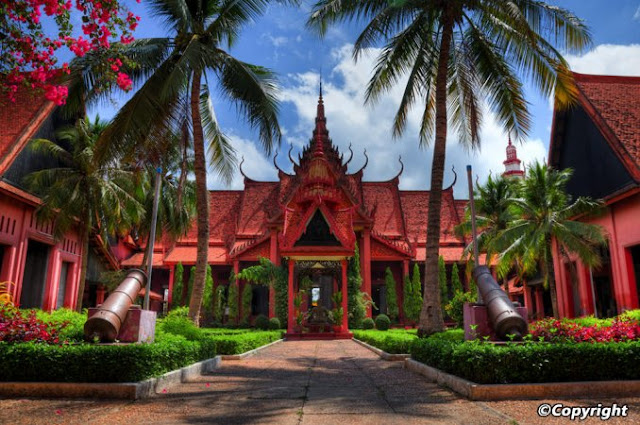The National Museum of Cambodia is the country’s largest archeological and cultural history museum. It enables you to have a glimpse into the cultural side of Cambodian history dating back to the 4th century. Inaugurated in 1920 as the Musée Albert Sarraut during the French colonial period, its opening was initiated by George Groslier – a famed author and historian – and architect as well as the first curator of the museum. In 1951, the French conceded the control of the museum to the Cambodians when it came be known as Musée National de Phnom Penh. Later in 1966, Chea Thay Seng became the museum’s first Cambodian director. It barely survived serious damage during the devastating Khmer Rouge regime from 1975 to 1979, and the museum and its precincts underwent a major refurbishment in the 1990s with contributions from the Australian Government and other patrons. Backed by the Cambodian Department of Museums, the museum’s role is now not just confined to preserving its exhibits that include one of the largest collections of Khmer artifacts in the world, but also to oversee other museums in the country.
Monday, January 7, 2019
National Museum of Cambodia
The National Museum of Cambodia is the country’s largest archaeological and cultural history museum. It enables you to have a glimpse into the cultural side of Cambodian history dating back to the 4th century. Housed within an impressive red sandstone structure and inaugurated in 1920 as the Musée Albert Sarraut during the French colonial period, the museum stands out as a fine illustration of the traditional Khmer architecture. There are over 14,000 interesting exhibits that are arranged according prehistoric, pre-Angkor, Angkor, and post-Angkor eras, each of which comprises bronze and wooden sculptures, ceramic items, ethnographic items and stone articles. One of its most spectacular exhibits is an eight-armed statue of Lord Vishnu that dates back to the 6th century.
The National Museum of Cambodia is the country’s largest archeological and cultural history museum. It enables you to have a glimpse into the cultural side of Cambodian history dating back to the 4th century. Inaugurated in 1920 as the Musée Albert Sarraut during the French colonial period, its opening was initiated by George Groslier – a famed author and historian – and architect as well as the first curator of the museum. In 1951, the French conceded the control of the museum to the Cambodians when it came be known as Musée National de Phnom Penh. Later in 1966, Chea Thay Seng became the museum’s first Cambodian director. It barely survived serious damage during the devastating Khmer Rouge regime from 1975 to 1979, and the museum and its precincts underwent a major refurbishment in the 1990s with contributions from the Australian Government and other patrons. Backed by the Cambodian Department of Museums, the museum’s role is now not just confined to preserving its exhibits that include one of the largest collections of Khmer artifacts in the world, but also to oversee other museums in the country.
The National Museum of Cambodia is the country’s largest archeological and cultural history museum. It enables you to have a glimpse into the cultural side of Cambodian history dating back to the 4th century. Inaugurated in 1920 as the Musée Albert Sarraut during the French colonial period, its opening was initiated by George Groslier – a famed author and historian – and architect as well as the first curator of the museum. In 1951, the French conceded the control of the museum to the Cambodians when it came be known as Musée National de Phnom Penh. Later in 1966, Chea Thay Seng became the museum’s first Cambodian director. It barely survived serious damage during the devastating Khmer Rouge regime from 1975 to 1979, and the museum and its precincts underwent a major refurbishment in the 1990s with contributions from the Australian Government and other patrons. Backed by the Cambodian Department of Museums, the museum’s role is now not just confined to preserving its exhibits that include one of the largest collections of Khmer artifacts in the world, but also to oversee other museums in the country.
Subscribe to:
Post Comments (Atom)

No comments:
Post a Comment